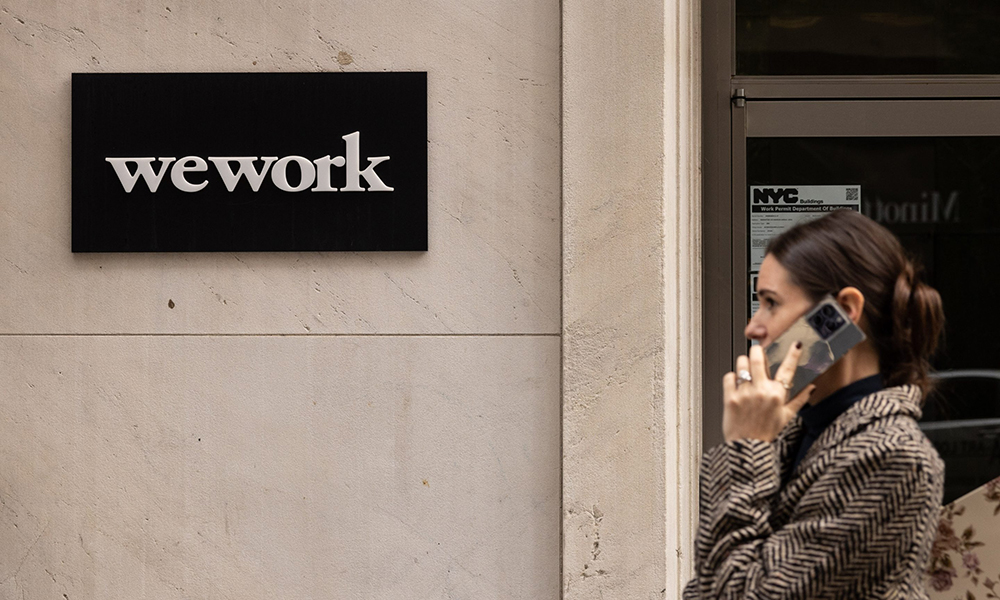
2020年,新冠疫情爆发后,全球经济几乎陷入停滞,美国公司举步维艰。标准普尔全球(S&P Global)的一项分析显示,2020年共有639家美国公司破产。虽然美联储(Federal Reserve)将利率下调至接近于零,美国国会也颁布了2.2万亿美元的《新冠病毒援助、救济和经济安全法案》(Coronavirus Aid, Relief, and Economic Security Act),以帮助维持实体经济,但2020年对美国公司来说是灾难性的一年。
然而令人意外的是,2023年,加息和工资上涨所造成的美国大公司破产的数量,甚至超过了新冠疫情最严重的时期。标准普尔全球的最新报告显示,2023年共有642家公司申请破产,创13年来的新高。这不仅超过了2020年的数据,相比2022年也增加了72%。标准普尔全球表示,在2020年,“有大批与新冠疫情有关的破产申请”。
实际情况可能更加严重,因为标准普尔全球的分析方法仅考虑到资产负债超过200万美元的上市公司,以及资产负债超过1,000万美元的私有公司。
虽然华尔街几乎一面倒地预测美国将降息和实现软着陆(通胀下降但不会引发经济衰退,造成大规模失业),但标准普尔全球警告称,今年公司将面临与2023年相同的问题。他们在1月9日写道:“虽然投资者预测美联储最早会在3月降息,但公司在近期内依旧要面对相对较高的利率和强劲的工资增长。”
德汇律师事务所(Dorsey & Whitney)主要负责破产业务的合伙人约瑟夫·阿科斯塔认同这种观点。他警告称,对于许多已经陷入困境的美国公司而言,今年仍然将是艰难的一年。他对《财富》杂志表示:“在高利率环境下,随着偿债义务不断增加,肯定会有许多公司无法像以前一样支付账单。”
这可能意味着2024年还会有大批的大公司破产。2023年,办公室租赁业巨头WeWork、电动踏板车公司Bird Global和零售商Bed Bath & Beyond均申请了破产。从办公地产到实体零售商,现在有许多行业要承受更高的借款和工资成本,而且它们还要面对新冠疫情之后所发生的行业变革。
新冠疫情之后远程办公的流行和供应链的转变,以及人工智能等新技术的诞生,让一些商业模式难以为继。德汇律师事务所的阿科斯塔警告,他认为“我们还远远没有看到新冠疫情的后果和它对主要行业的影响。”(财富中文网)
译者:刘进龙
审校:汪皓
2020年,新冠疫情爆发后,全球经济几乎陷入停滞,美国公司举步维艰。标准普尔全球(S&P Global)的一项分析显示,2020年共有639家美国公司破产。虽然美联储(Federal Reserve)将利率下调至接近于零,美国国会也颁布了2.2万亿美元的《新冠病毒援助、救济和经济安全法案》(Coronavirus Aid, Relief, and Economic Security Act),以帮助维持实体经济,但2020年对美国公司来说是灾难性的一年。
然而令人意外的是,2023年,加息和工资上涨所造成的美国大公司破产的数量,甚至超过了新冠疫情最严重的时期。标准普尔全球的最新报告显示,2023年共有642家公司申请破产,创13年来的新高。这不仅超过了2020年的数据,相比2022年也增加了72%。标准普尔全球表示,在2020年,“有大批与新冠疫情有关的破产申请”。
实际情况可能更加严重,因为标准普尔全球的分析方法仅考虑到资产负债超过200万美元的上市公司,以及资产负债超过1,000万美元的私有公司。
虽然华尔街几乎一面倒地预测美国将降息和实现软着陆(通胀下降但不会引发经济衰退,造成大规模失业),但标准普尔全球警告称,今年公司将面临与2023年相同的问题。他们在1月9日写道:“虽然投资者预测美联储最早会在3月降息,但公司在近期内依旧要面对相对较高的利率和强劲的工资增长。”
德汇律师事务所(Dorsey & Whitney)主要负责破产业务的合伙人约瑟夫·阿科斯塔认同这种观点。他警告称,对于许多已经陷入困境的美国公司而言,今年仍然将是艰难的一年。他对《财富》杂志表示:“在高利率环境下,随着偿债义务不断增加,肯定会有许多公司无法像以前一样支付账单。”
这可能意味着2024年还会有大批的大公司破产。2023年,办公室租赁业巨头WeWork、电动踏板车公司Bird Global和零售商Bed Bath & Beyond均申请了破产。从办公地产到实体零售商,现在有许多行业要承受更高的借款和工资成本,而且它们还要面对新冠疫情之后所发生的行业变革。
新冠疫情之后远程办公的流行和供应链的转变,以及人工智能等新技术的诞生,让一些商业模式难以为继。德汇律师事务所的阿科斯塔警告,他认为“我们还远远没有看到新冠疫情的后果和它对主要行业的影响。”(财富中文网)
译者:刘进龙
审校:汪皓
When much of the world’s economy shut down after the outbreak of COVID-19 in 2020, businesses across the U.S. were on the ropes. In total, 639 U.S. corporations went bankrupt that year, according to an analysis by S&P Global. Despite the Federal Reserve slashing interest rates to near zero and Congress unveiling the $2.2 trillion Coronavirus Aid, Relief, and Economic Security Act to help keep Main Street afloat, it was a disastrous year for American businesses.
But surprisingly, in 2023, rising interest rates and wages have led to even more bankruptcies than during the height of the pandemic among the U.S.’s biggest firms. There were 642 total corporate bankruptcy filings last year, a 13-year high, according to a new report from S&P Global. That’s not only more than there were in 2020—when, as S&P Global notes, there was “a flurry of COVID-19 pandemic-related filings”—it’s also 72% more bankruptcies than there were in 2022.
And the true carnage was even more dire than the statistics indicate, when you consider that S&P Global’s methodology only factors in bankruptcies by public companies with assets and liabilities over $2 million, as well as private companies with assets and liabilities over $10 million.
Despite Wall Street’s nearly consensus forecast for interest rate cuts and a soft landing (when inflation fades without a job-killing recession), S&P Global warned that corporations will face the same issues this year as they did in 2023. “Although investors expect the Federal Reserve to cut interest rates as early as March, companies will still have to contend with relatively high interest rates and robust wage growth in the near term,” they wrote on January 9.
Joseph Acosta, a partner focused on bankruptcies at the international law firm Dorsey & Whitney, echoed those comments, warning it could be a tough year for many already ailing U.S. corporations. “In a high-interest-rate environment, where debt service obligations are rising, there are surely many other companies who simply won’t be able to pay their bills like they used to,” he told Fortune.
That could mean 2024 features another slate of big name bankruptcies. Last year, the office leasing giant WeWork, the electric scooter company Bird Global, and the retailer Bed Bath & Beyond all filed for bankruptcy. A number of sectors, from office real estate to brick-and-mortar retailers, are now not only struggling with higher borrowing and wage costs, they’re watching their industries change in front of them after the pandemic.
The rise of remote work as well as the shifting of supply chains and the birth of new technologies like AI after the pandemic have left some business models broken. Dorsey & Whitney’s Acosta warned that he believes “we have not remotely finished seeing the wake of the pandemic and its effects on major industries.”






